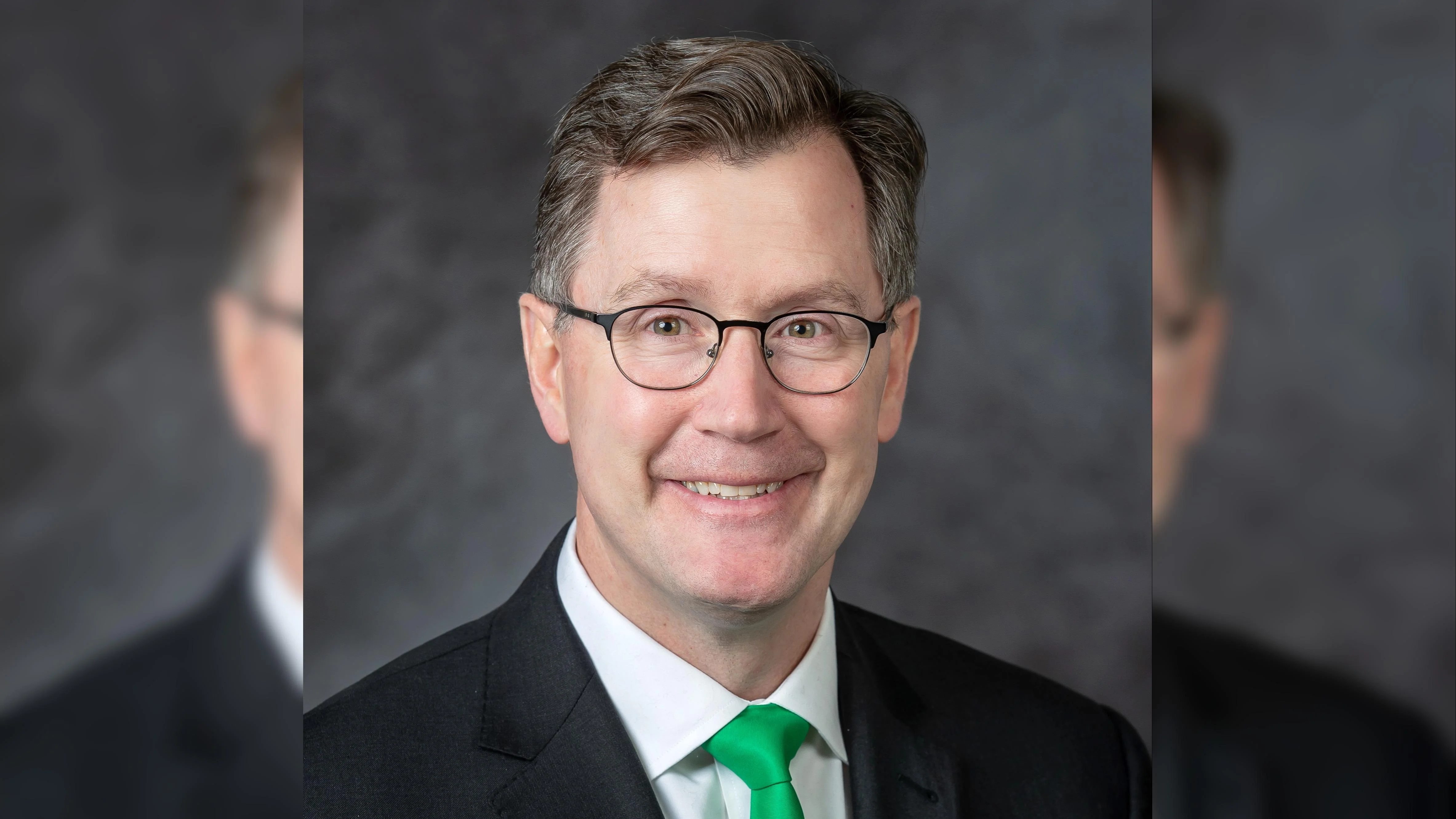Dr. Andrew Armacost, President | University of North Dakota
Dr. Andrew Armacost, President | University of North Dakota
The University of North Dakota (UND) has undergone significant changes over the past decade, moving from a period marked by budget cuts and layoffs to achieving record enrollment and a strengthened brand identity.
In 2016, North Dakota experienced a $1 billion budget shortfall due to falling global crude oil prices. The average price per barrel dropped sharply that year, impacting state revenues that fund public institutions. Peter Johnson, director of government relations and public affairs for the UND Alumni Association & Foundation, said, “A reality is that North Dakota’s primary economic base is agriculture and energy. That happened to be a time when both sectors were down. The money rolling into the state’s coffers was much less than anticipated.”
Johnson noted that former Governor Jack Dalrymple ordered all state agencies to reduce their general funds by 4.05%, leading to program cuts, staff layoffs, and elimination of some athletic teams at UND. “The mood was very pensive, people were wondering where things were going,” Johnson said.
Despite these challenges, interim President Ed Schafer and later President Mark Kennedy implemented measures aimed at long-term growth. Johnson compared the approach to pruning trees: “It’s kind of like pruning trees – you’re cutting in a way that you’ll have renewed growth.” He added that optimism on campus has grown: “Most of the people I interact with now are very happy with where UND is at. There’s more of a sense of family, a sense of ‘we’re all in this together.’ We have a leader who cares about students, faculty and staff, and is always trying to do the right thing.”
As part of its modernization efforts, UND demolished several outdated buildings after conducting cost-benefit analyses on maintaining older structures. This resulted in reducing building space by over 346,000 square feet as of that fiscal year compared to previous years. Vice President of Finance & Operations Karla Mongeon-Stewart explained the rationale: “Now, we have $10 million we can use to match the state’s funds to do twice as much work as we could if we only relied on the state,” she said regarding allocating tuition revenue toward deferred maintenance.
Mongeon-Stewart also highlighted improvements in how maintenance priorities are managed: “We’ve improved every year,” she said. “In the past, Facilities had the ‘go fix what you can’ mindset. Now… it’s been far more coordinated with leadership.” Brian Larson, director of construction management at UND, pointed out projects such as renovations at Merrifield Hall and Chester Fritz Library as examples of responsible investment.
UND diversified funding sources for capital projects through bonding, philanthropy, reallocating resources and public/private partnerships—an approach intended to protect against future financial uncertainties.
Looking ahead with its campus master plan extending over three decades into the future—including new facilities like a flight operations building—university leaders continue making decisions about optimizing campus infrastructure.
Mongeon-Stewart credited consistent adherence to planning across different administrations: “We’ve been lucky because every president has embraced the idea of living to the model… Ed Schafer really set the stage for cutting more than you need today so you can invest in what you need tomorrow.”
Marketing efforts also played an important role in UND's transformation. Since its establishment in 2017 under Meloney Linder—vice president for Marketing & Communications—the Division of Marketing & Communications unified messaging across colleges and departments under one brand: "Leaders in Action." Linder described previous communications as fragmented but now sees greater cohesion: “It was really the Wild West — every school or college would have its own website… When things are decentralized it’s hard to have that cohesive message.”
Linder emphasized community involvement in developing UND's strategic plan adopted in January 2023: “People do see themselves within the brand,” she said. Enrollment figures reflect this renewed image; fall 2025 saw record numbers attending classes on campus since before COVID-19 disruptions.
Additionally, about 2,000 students—or just over 12%—are affiliated with military service according to Janelle Kilgore (vice provost for strategic enrollment management). Linder noted these students often strengthen local workforce ties: “When people come here and they have a great experience they sometimes want to stay when they’re done with service… UND is a great attractor.”
UND now counts itself as North Dakota residents' top choice for higher education with total enrollment reaching 15,844 students—a rise from previous years.

 Alerts Sign-up
Alerts Sign-up